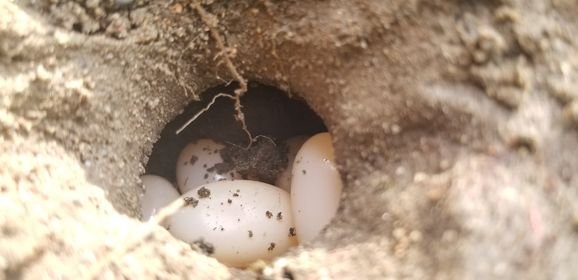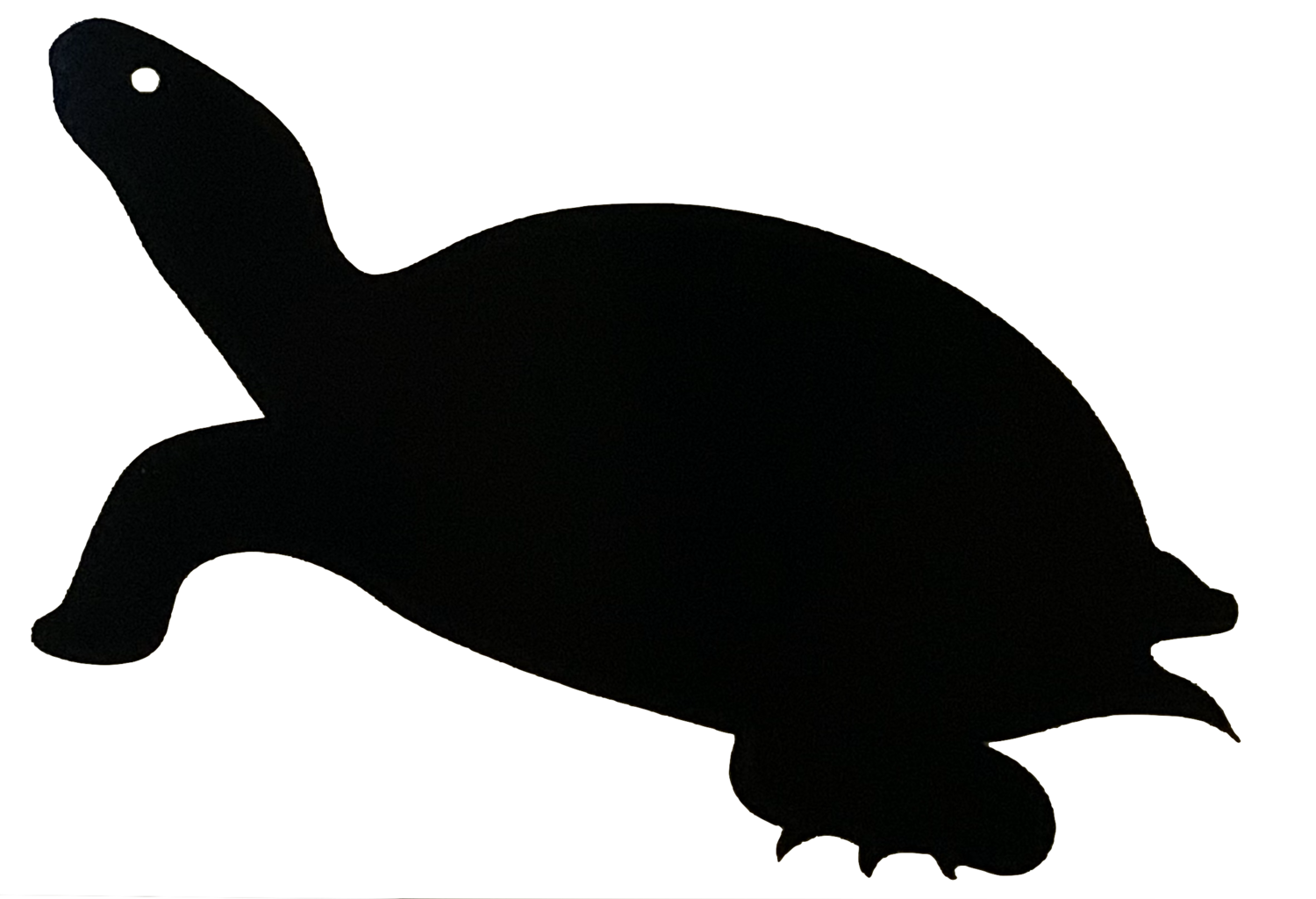Turtle Nest Rescue Program

About the Turtle Nest Rescue Program
This is a new program Turtles Kingston is launching for 2023! The purpose of the program is to provide information and expertise to the community with regards to turtle nest protection where nest protector boxes are not able to be placed. For the rare situation where a turtle nest cannot stay where it is located (it is at risk of being harmed by human activity), this program outlines the steps that must be taken in order to obtain the appropriate permits and individuals to rescue the nest as altering or moving a turtle nest is ILLEGAL!!!
Why is it illegal to alter a turtle nest?
All Ontario turtles are listed as Species at Risk (special concern, threatened, endangered, or extirpated). Species at Risk are protected under the Endangered Species Act and have specific rules and regulations that are associated with their protection. This protection includes the need for permits before you can do anything with turtles or turtle eggs. Of course, helping move a turtle across a road in the direction it was heading is exempt from requiring a permit as you are moving it out of immediate harm.
Another factor to consider is that turtle eggs are positional, meaning they must remain in the same position / orientation during incubation. If turtle eggs are rotated or moved the hatchling embryo can detach from the shell and this will kill the turtle! Thus, in order to ensure you aren’t doing more harm to turtle populations you must have the required permits and training to handle turtle eggs.
What to do when you find a turtle nest
Turtles like to nest in sandy / gravelly materials that get good sun exposure. These locations don’t necessarily need to be adjacent to a water body. This means that you can find turtles nesting almost anywhere!
If you find a nesting turtle:
A turtle nest that was abandoned before the female turtle laid eggs.
Keep your distance (at least 5 m, ideally 10 m) and allow the turtle to finish nesting. Take several photos of the nesting turtle and surrounding area so the exact nest location can be identified later.
Once the turtle has finished nesting confirm that the nesting was successful by observing the nesting location:
If there is a hole where the turtle was nesting it is a test nest and doesn’t contain any eggs (see image).
If there is no visible hole and the substrate material is almost perfectly returned to the way it was then this is a successful nest and will have eggs in it.
NEVER alter a turtle nest as this is illegal and you can actually harm and even kill the eggs if you disturb it!
If possible, place a nest protector box over the nest to protect from predation. Learn more about protecting nests here. If you cannot place a nest protector box then leave the nest as is.
In most situations the turtle nest can stay exactly where it is (protector or not). However, there are some rare circumstances where moving the turtle nest is required as the nest is at risk of being harmed. For example, active construction is occurring and cannot be delayed / postponed.
NOTE, you are unlikely to know there is a turtle nest in a location if you did not see the turtle nesting there. Turtles are very good a camouflaging their nests but remember turtles return to the same locations each year to lay nests. So, if you had a turtle nesting in a location last year it’s likely it has nested or will nest there again.
What nests can be rescued?
In most cases a turtle nest will not qualify for permits that allow them to be moved. A turtle nest must be determined, by the MNRF (Ministry of Natural Resources and Forestry), to be in a hazardous location in order to receive the appropriate permits.
Some situations that may result in permits being obtained include:
a nest in an active construction site that cannot be delayed or post-poned
a nest on an active farm where required farm activities will put the nest at risk
a nest in a gravel or dirt pile that must be removed for human safety
The following locations are not able to be moved:
in a residential driveway or driveway that receives minimal traffic
in a construction site where active construction can be delayed or post-poned in that area until the following spring
in a gravel or dirt pile being used for landscaping or construction (the MNRF recommends the part of the pile with the nest is left alone until the following spring)
in a local park
in a parking lot
If you believe you have a turtle nest in a location where it is at risk and should be moved please contact us at turtleskingston@gmail.com or contact the MNRF directly at MNRF.PET@ontario.ca or 705-755-2001.
A turtle has nested in your driveway!
In one way you are lucky! The turtle has deemed your property the preferred spot that it would like to reproduce! This means in 60-90 days there will be tiny baby turtles and you can be part of their amazing journey.
Okay, we also know this isn’t ideal. Unfortunately, there is nothing you can do to stop the turtle once she starts to nest and the nest cannot be moved. If possible, place a nest protector over the nest to protect it from predators. However, if it is in a location where you cannot protect it with a nest protector then that is fine. Leave the nest as it is. The occasional vehicle driving over the nest will likely have little impact. Just don’t park your car on the nest, if possible, so that it can continue to receive adequate sunlight for incubation, and remember to pay attention for hatchlings 60-90 days after the nest was laid (or even the following spring if it was a map or painted turtle).
This turtle will likely return next year to lay more eggs in your driveway, it may even return again the same year. However, for the next year there are steps you can take to encourage the turtle to nest in a more favourable location - although this is not a guarantee.
Select a more convenient location in your yard that receives full sun - ideally between your driveway and where the turtle came from.
Mixing sterilized sand with 1/2 - 1 inch stones to create some new nesting material
Create a nesting mound with a gradual slope towards the south (sunny side) with your prepared materials
Rescuing turtle nests - Procedure
Individual contacts Turtles Kingston via email about a turtle nest they believe is in a hazardous location
Turtles Kingston confirm if they believe the nest would qualify for an emergency authorization permit from the MNRF for rescue and that they are able to help with egg extraction (if Turtles Kingston is not able to help you would need someone with experience to obtain the permits)
Individual (must be the land owner, it not land owner you must contact the land owner to continue) contacts MNRF to indicate the turtle nest is in a hazardous location and to request that experienced individuals from Turtles Kingston be provided with an emergency authorization permit to extract the eggs. MNRF.PET@ontario.ca or 705-755-2001
MNRF responds to confirm if they approve the location as hazardous and provides the permit application form
Individual shares permit application form with Turtles Kingston (if MNRF did not already do so)
Turtles Kingston fills out application form and submits to MNRF
MNRF provides emergency authorization permit
Turtles Kingston and Individual arrange day / time for nest rescue
Turtles Kingston extracts the at risk eggs and transports them to Sandy Pines Wildlife Centre for incubation
Turtles Kingston submits a report to MNRF
Sandy Pines Wildlife Centre contacts Turtles Kingston when hatchlings are ready to be released
Turtles Kingston releases hatchlings with individual if they are interested
Please note: Turtles Kingston charges a fee for nest rescue in order to support this program and egg incubation.




